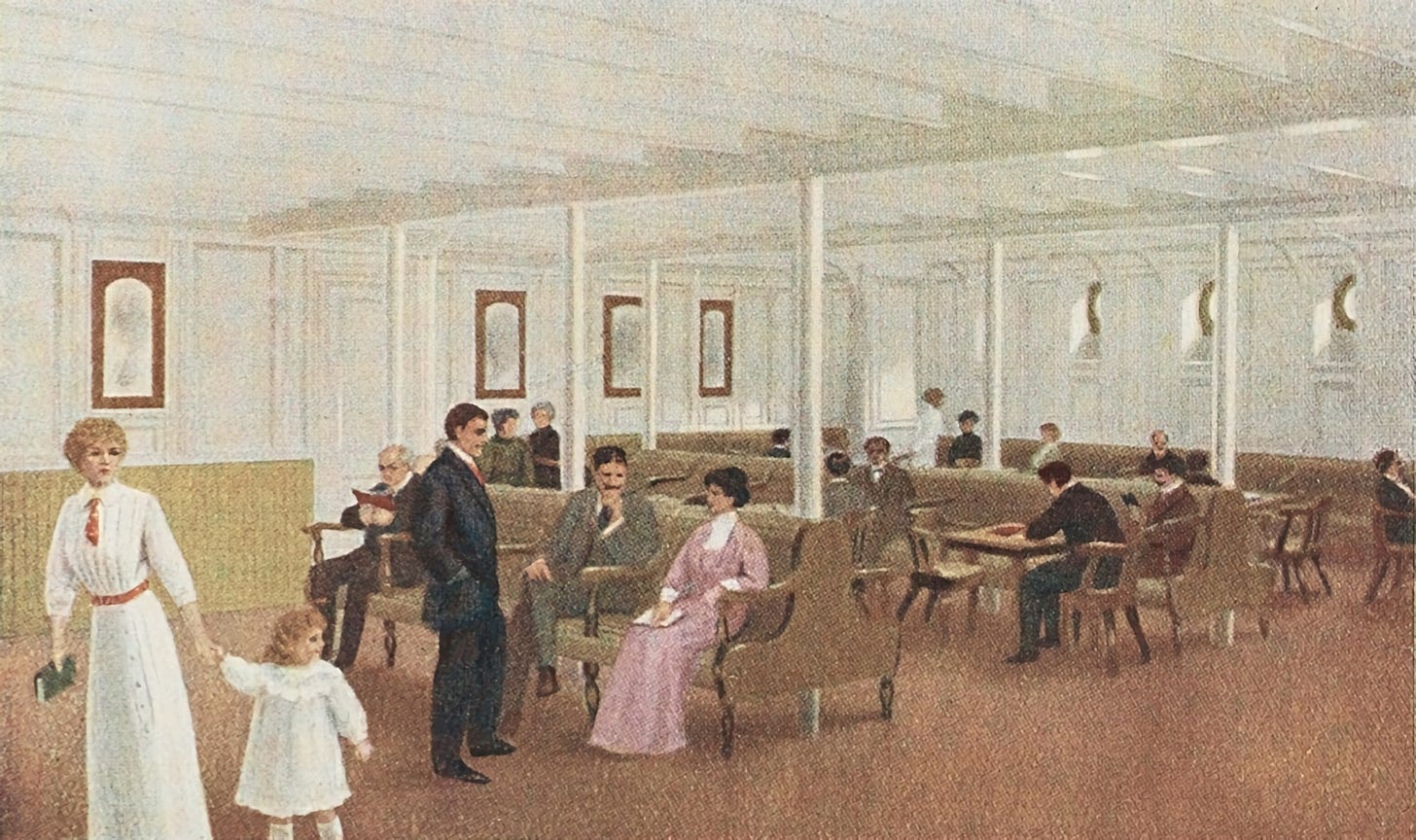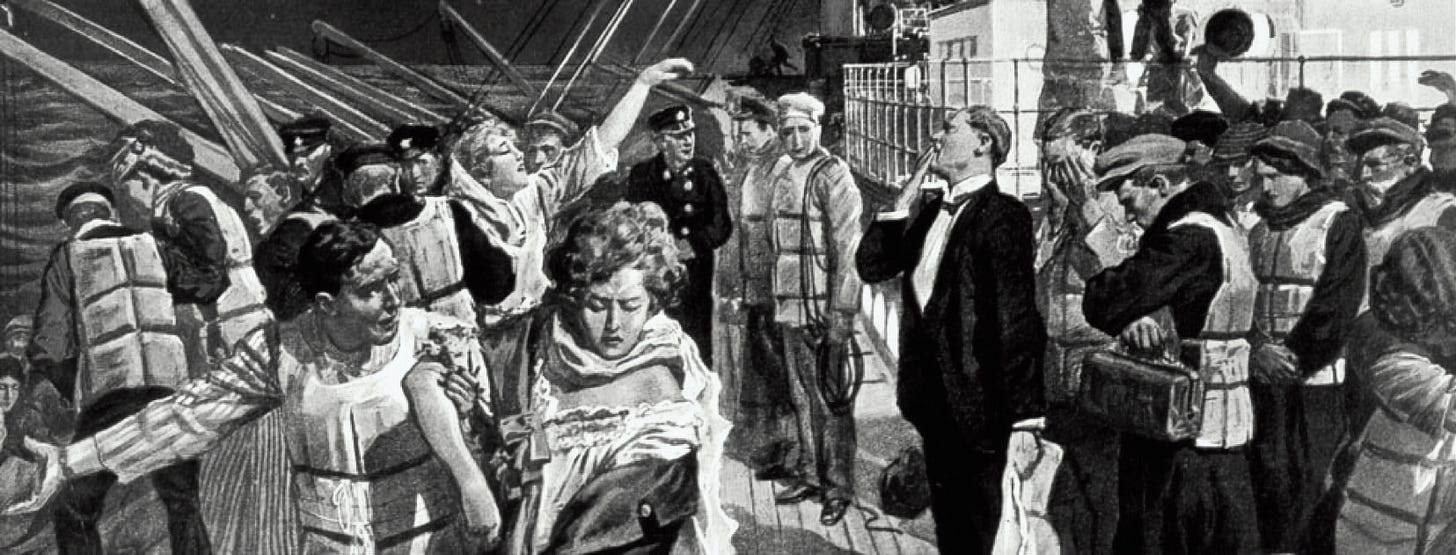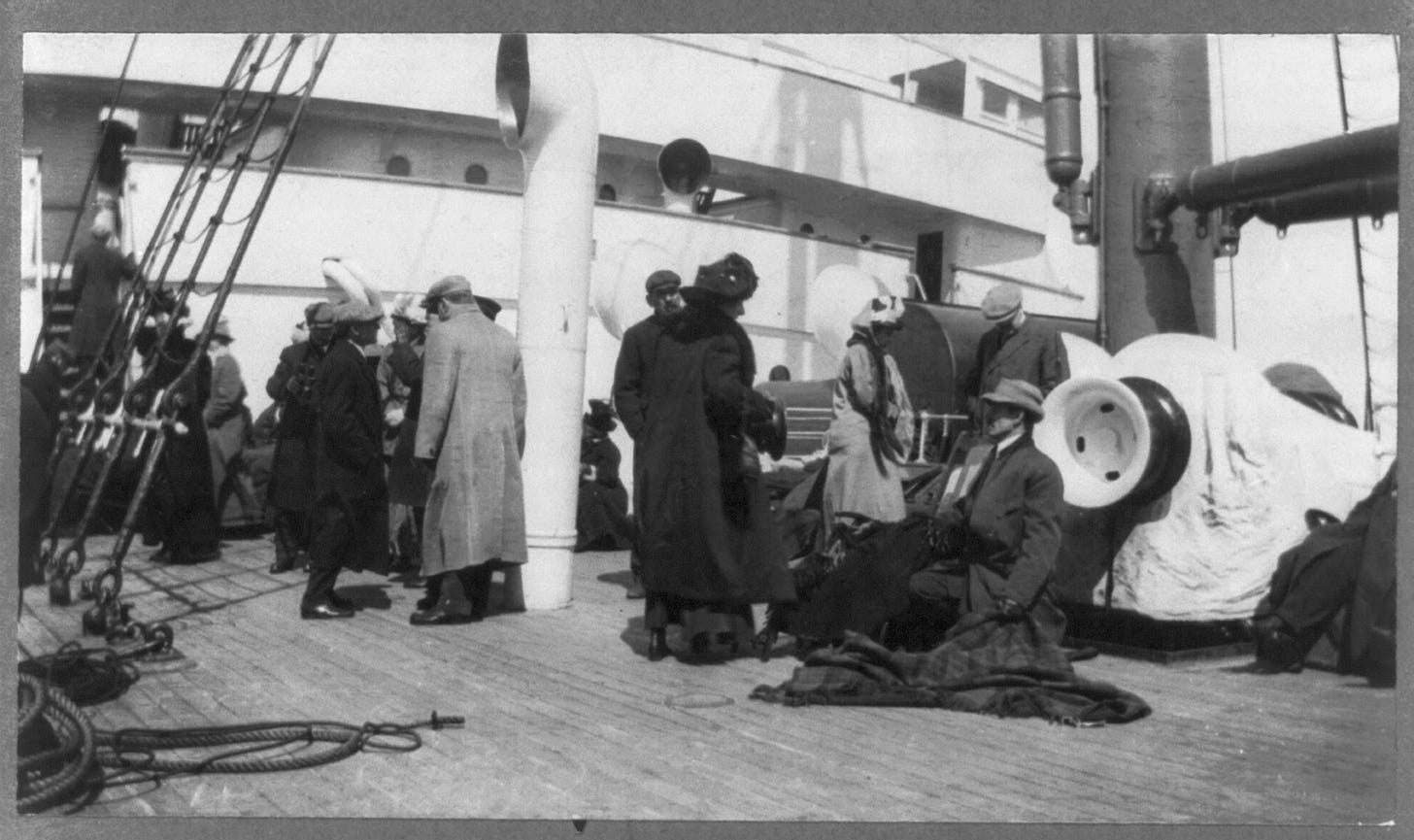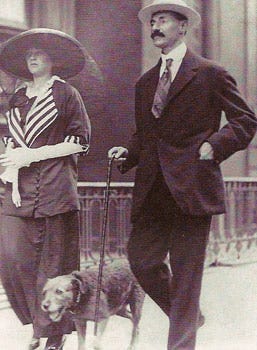Note: If you are like me and like to be able to see what a person looks like in a story, here is a link for a picture of the individuals discussed in this post, Adolf and Elisabeth Dyker. (While Encylcopedia Titanica does not allow for the downloading of their images, they are okay with sharing the links of the images in articles.)
The last I saw of my husband was when we were being lowered into the sea. He waved at me from the deck and when I saw the Titanic sink I knew that he had gone down with the ship and with the rest of the brave men who stood aside and even forced the women and children to go ahead of them to safety. -Elisabeth Dyker, American Third Class Passenger, Titanic
Elisabeth Dyker, twenty-two, and her husband Adolf, twenty-three, had traveled to Sweden late in 1911 to settle the affairs of Adolf’s father who had passed away. Elisabeth was born in Worcester, Massachusetts, to Swedish parents. Adolf had been born aboard a ship sailing from Sweden to America.
Elisabeth had an interest in music. Prior to her travels, she had attended Yale Music School. She was a singer and provided music lessons. Adolf worked as a tram conductor in New Haven, Connecticut, where the young couple had settled after their marriage in 1905.

Account of the sinking
For their return to the United States, the couple had boarded third class of the ill-fated Titanic. Elisabeth said that all during the evening of the sinking, she and Adolf had been enjoying themselves aboard the ship. At the time of the collision with the iceberg, she said that she was fully dressed except that she did not wear a hat. Her and Adolf had gone into the main saloon when they felt the shock of the ship hitting the iceberg. She said that there was no shouting or confusion and that everything remained orderly. The couple was under the impression that the ship had simply lost a propeller and would be easily repaired.

Elisabeth said that once the scope of the disaster was realized, Adolf lifted her off her feet and forced her into the boat, as she had refused to leave his side.

She said that her lifeboat was filled with many women and a few sailors, and that when the lifeboat got about one-hundred feet away from the Titanic, she saw the ship rise and heave to the lunge of the sea before it dove into the water with all aboard the ship.
Aboard the Carpathia
Elisabeth had an interesting account of her experience aboard the Carpathia, the Titanic rescue ship. As with any recollection of the Titanic event, there is the possibility that some of Elisabeth’s perception may not be 100% accurate, but I found her account of the experience to be very detailed and moving.
Elisabeth stated that she arrived aboard the Carpathia around 6 am on the morning of the sinking. She says that the deck was filled with passengers of the Titanic and that the officers of the Carpathia were working heroically to care for them.

Elisabeth began to go around the ship visiting other women who had been saved. One of the women she saw was Madeleine Astor, the wife of the richest passenger aboard the ship, Colonel John Jacob Astor IV (JJ Astor). She observed Mrs. Astor crying and waving her hands in hysterics. Elisabeth said she tried to soothe Mrs. Astor for about half an hour, but eventually Mrs. Astor became violently mad and the officials of the boat had to lock her in her stateroom.
Elisabeth said that many women aboard the ship were in hysterics as many had lost their husbands or family, and that the ship’s hospital was overflowing and the physician was working with passengers for hours. The passengers of the Carpathia did their best to soothe the nerves of the women who had lost husbands or other family members on the Titanic. She said that occasional reminders of the sinking would send them back into hysterics at times throughout the voyage.
Dyker herself was noted to be in a nervous condition and experiencing occasional hysterics upon her arrival to America. Her family anxiously waited for her in the sitting room of their home where they had a view of the road in front of the house, listening for the sounds of the horses’ hoofs that would signal the return of Mrs. Dyker.
Once at home she was put in the care of a doctor who ordered her to rest shortly after her arrival due to her nervous condition and having a bad cold.
The aftermath
Adolf had died in the sinking, and sadly there was no recovery of his body. Adolf had shown much potential at his job as a tram conductor and it was a loss to the community that he was never able to reach his potential. Elisabeth continued to work as a music teacher and went on to remarry after a few years and had two sons.
I hope that you enjoyed reading stories of the American born third class Titanic passengers for this year’s Titanic month. I appreciate you taking time to learn their stories, and I look forward to sharing more Titanic stories with you in the future.
Sources:
https://www.encyclopedia-titanica.org/titanic-survivor/anna-elisabeth-judith-dyker.html
https://www.encyclopedia-titanica.org/titanic-victim/adolf-fredrik-dyker.html
Mrs. Dyker Tells of Heroism of Wives: Many Were Forced Into Lifeboats Who Begged Desperately To Remain With Their Husbands, The Bridgeport Times and Evening Farmer, April 20, 1912






An interesting question about this that I now wonder is was this a fever dream on Elisabeth’s part or did she truly have this interaction? I am leaning toward that she did because I saw at least a couple accounts saying Mrs. Astor was in a nervous condition after the sinking. Thanks to everyone who followed this series, i am already thinking about what Titanic subject I could write about next year, maybe authors on the Titanic?
Enjoyed this series a lot. Do you think women and children would still be the first ones to board rescue boats if this happened today?